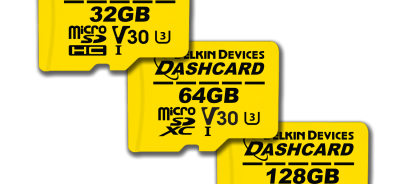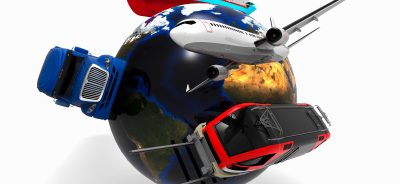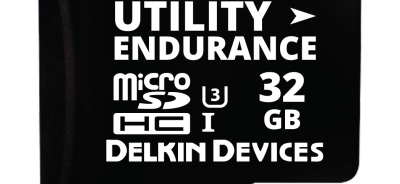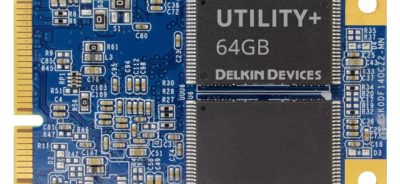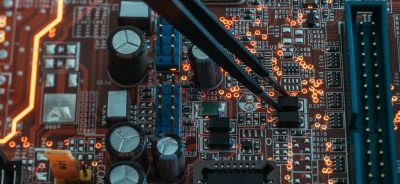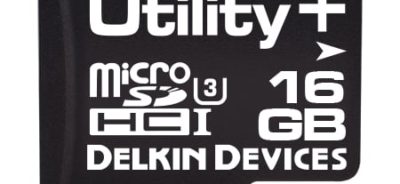Flash Storage Solutions in the IoT/IIoT
Whether you notice it or not, the IoT, or Internet of Things, is changing the way you live and the way you relate to the world around you. The standalone items you use daily that used to work independently are increasingly interconnected, in an increasingly complex and constantly growing digital network. According to researchers, billions of objects will be connected to each other on a digital level within two years. Continue reading for an overview of flash storage solutions in the IoT/IIoT.
What are IoT enablers?
The IoT has multiple components that allow these devices to connect to each other via various wired and wireless networks.
- Sensors: Responsible for detecting what is happening in the environment and translating that environmental information into digital data.
- Processors: Take the digital data, analyze and process them, and send them to actuators.
- Actuators: Create useful outputs, such as actions, visualizations, or responses, based on the digital data.
To visualize how this process works, consider a parking assistance system:
- The front and rear bumpers of cars with parking assistance systems contain ultrasonic sensors that become active when you’re parking. Based on data received from the sensors, processors in the car evaluate certain parameters, such as the space not being large enough for the car or the presence of an obstruction. That information is sent to an actuator, which triggers an audible warning, such as a beep, to let the driver know not to proceed with parking.
- At the same time, ground sensors detect if parking spaces are in use or unoccupied. This information is transmitted from the sensors to the processors over a network system, and then actuators trigger a real-time parking map to be updated. People parking their cars can view the open spots on their phones or on car head units connected to the IoT, so that they can move directly to available parking spaces.
What is the difference between the IoT and IIoT?
It is not just personal-use devices that are being dramatically impacted by the IoT. In addition to changes in everyday activities for individuals, businesses of all sizes are changing the ways that they operate in response to the IoT. In industrial fields, such as manufacturing, this technology is usually referred to as the Industrial Internet of Things, or IIoT. Industry 4.0 is another name sometimes used for the IIoT. The IIoT refers to the use of machine-to-machine, or M2M, communication via smart machines in order to gather data, analyze the data, and relay the relevant information so that inefficiencies can be detected. Using smart machines, sensors, and big data technologies in this way helps businesses greatly reduce wasted time and money.
Although the IoT and IIoT are similar, they do have some important differences. Both work across human-object and object-object connections, but they have different requirements because of the different demands on their systems. Typically, IIoT devices are used in rugged operating conditions in which temperatures and other environmental factors would pose challenges to typical IoT systems. Similarly, IIoT systems often have to deal with diverse workload demands and switch between several specific applications. Because of this, there isn’t a one-size-fits-all storage solution, and picking the fastest choice is not always the best option for the situation.
What about cloud and edge storage?
Given the number of devices and applications that are connected via the IoT, there is an incredible amount of data being generated. Everything from self-driving cars to airplanes, manufacturing automation devices, oil rigs, smart homes, and healthcare systems are generating, processing, analyzing, and transmitting data—and often, this information is of critical importance. With IIoT data in particular, information that is lost, corrupted, or inaccessible can cause operational errors with disastrous consequences.
Initially, developers believed that the cloud would be the right location for this kind of data storage. However, as the IIoT has expanded and grown, storage is moving to the edge from the cloud.
Cloud storage is essentially a storage system that allows users to access data over the internet. This means that they can retrieve files from anywhere, on any device with an internet connection. Another advantage of the cloud is that multiple users can access the same data at the same time, as long they have the necessary passwords.
The downside of cloud storage for the IIoT is that IIoT applications generate hundreds—if not thousands, of terabytes of data each hour. This level of data demand can be too much to be processed over the internet in real time. Attempting to process this level of data can be prohibitively costly. In addition, it can lead to significant network disruptions and slowdowns. With IIoT applications, where real-time data processing is critical, relying on internet connections can be inefficient and even put lives and property in danger. For this reason, edge computing has become the go-to solution for the IIoT. With edge computing, information is managed closer to the source using flash technology, instead of in the cloud. This means that edge computing takes stress off the network and reduces the cost of transmission. It also allows data to be accessed immediately.
When it comes to cloud storage and edge storage, here is a look at their most effective uses:
- Cloud Storage
- Reviewing and analyzing historical data to improve processes and machine learning
- Processing big data
- Warehousing data
- Edge Storage
- Accessing data immediately to make real-time decisions
- Visualizations at the source
- Acting as a cache for information before it is written to the cloud
- Distributing data to be processed on a local level in order to preserve the speed of the network
- Basic data analytics
What should engineers know about using flash storage solutions in the IoT/IIoT?
Both cloud and edge computing solutions are often used in tandem. This allows data to be processed and analyzed in ways that make the most sense, from delivering data at the fastest possible speeds or analyzing vast amounts of data. Flash storage solutions make it possible to complete these processes quickly and reliably.
With flash storage, frequent write processes impact endurance. Data from both the IoT and IIoT are categorized in two broad categories: large and small files. Large files, such as video files, are read sequentially, while smaller files are read and written sporadically. When frequent writes occur, flash memory is likely to lose endurance. Thus, it is essential for the flash memory to be utilized as efficiently as possible to ensure the longest lifespan for the storage device.
Do you have questions about flash storage solutions in the IoT/IIoT? Delkin is here to help you make the right decisions with customized solutions for your specific needs. Contact a member of our customer applications team today.
ORDER DELKIN INDUSTRIAL FLASH STORAGE TODAY through our distribution partner Newark.
 Login
Login Register
Register



